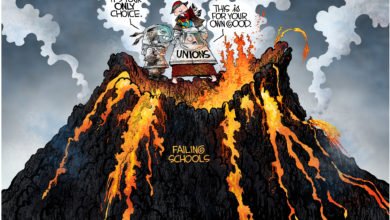Administration Says Its Saving Homes, Oversight Report Says Otherwise
The Congressional Oversight Panel published a report on October 9th assessing the effectiveness of “foreclosure mitigation efforts” for the previous six months. Many in the media are focusing on how the administration’s foreclosure efforts are failing. Just reading the executive summary, I was just as troubled by who these efforts are failing. The first paragraph grabs the attention with, “The combination of federal efforts to combat the financial crisis coupled with mortgage assistance programs makes the taxpayer the ultimate guarantor of a large portion of home mortgages“. Congratulations, even though you and I knew better than to get into real-estate investing during an obvious bubble.. the government forced us into it and we’re about to take a bath.
On a positive note, the executive summary does say that it is likely that the benefits will eventually outweigh the costs to the taxpayer. The initiative that is expected to bring about these benefits is Making Homes Affordable (MHA) which is made up of two programs – the Home Affordable Refinance Program (HARP) and Home Affordable Modification Program (HAMP). HARP focuses on homeowners that are in-good-standing on their home loans but the mortgages are valued higher than the actual value of the home. HAMP focuses on those that can no-longer afford their mortgages and keeping them out of foreclosure.
HARP reconfigures the loans into stable, affordable loans and has performed almost 96,000 mortgage reconfigurations or refinances. It is difficult to prove a negative, just as with the “jobs saved or created” angle the administration takes on the stimulus plan. Here we have another. Did we actually prevent any foreclosures or just guarantee a more-favorable loan for people that bought too much house? The report does not even try to compute how many homes loans were saved or prevented from being bad. Probably because it can’t be done.
HAMP subsidizes the mortgage payments of soon-to-be-foreclosed debtors with taxpayer dollars. This mortgage modification program reconfigured 1,711 mortgages and put another 362,348 other borrowers into a 3-month trial program. The U.S. Treasury expects that it will spend almost $43 billion of the $50 billion TARP funds for mortgage modification. This amount would support about two-and-a-half million loan modifications. Unfortunately, current estimates are for closer to 12 million foreclosures will occur which means that, “the remaining losses will be massive”.
The report stresses three main reason why these favored programs of the Obama administration may not succeed. Size, Scope and permanence.
First, the scope of the program will limit it from helping the most-at-risk mortgages. The eligibility requirements will not allow adjustable rate mortgages or interest-only loans to be subsidized by taxpayer money. HAMP is also not designed to help with non-payment of mortgages due to unemployment – the main reason for many home-losses in these economic times. The whole program is built around fixing subprime mortgages, and even the report states that it’s so “six-month-ago”. Nothing in this bill deals with the actual mortgage crisis that Americans are dealing with.
After scope, the report explains how the size of the program is also insufficient. Foreclosure starts are coming twice as fast as HAMP modifications and many homeowners that would qualify for the program are losing their houses while waiting for the program to catch up. This is similar to the cash-for-clunkers issue of too many promises for too little capability. The car dealers could decide to stop accepting deals under that program to avoid cash-flow disasters. These homeowner’s only choice is to lose their homes. Even once the program catches up, it will only be able to service 50% of the Treasuries own estimate for home foreclosures.
Lastly, the Congressional Oversight Panel’s report addresses permanence. Will these modifications actually result in the prevention of a home loss? Only a small portion of the modifications done under HAMP have resulted in permanent stable mortgages. The panel suggests that after massive infusions of taxpayer capital, these loans default anyway. The report states that real results of these programs will be, “that foreclosure is delayed, not avoided”.
There is some discussion of negative-equity. If the housing market continues depressing or deflating, more people may consider walking away from their mortgages as there would be no inherent value in the home. These wealth-lost scenarios could increase foreclosures well-beyond even the pessimistic estimates of the U.S. Treasury. If this is added into what the report calls “payment reset shock”, due to high loan-to-value adjustable loans, it’s obvious the government has no-chance at making any real dent in the real-estate crisis.
What the report doesn’t consider is the massive de-leveraging that is occurring in the American economy. In the Conservative Daily News article entitled, “Going Galt Without Realizing“, it is apparent that between the government’s willingness to create money for these mortgage-subsidization programs and American’s lack of willingness to continue borrowing to consume, our fractional reserve systems could add another last straw. Bank reserves will dwindle as fewer and fewer Americans borrow for homes and autos either because they can’t (due to recent foreclosure or a barely-affordable mortgage) or because this crisis has caused a change-in-behavior towards reduced indebtedness.
Whether we look back at cash-for-clunkers or at this initiative, it becomes obvious that the administration is unable to judge the size, scope, permanence or effectiveness of the programs it supports.





